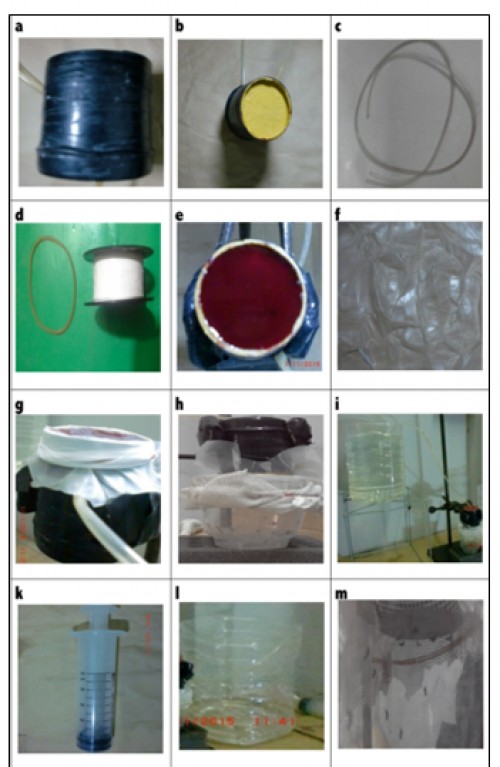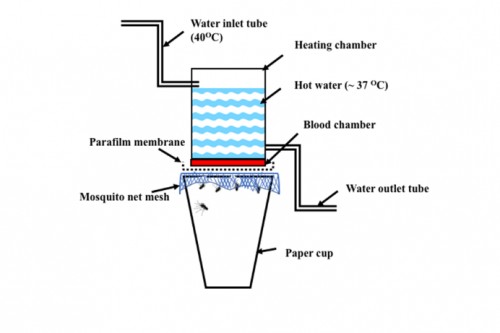 Fig. 1:
Fig. 1: Materials and assembly of the blood feeding device. a. A two-chambered feeding container having a heating chamber (upper part, a capacity of ~ 60 ml water) and blood chamber,(lower part, capacity ~ 5 ml of blood), b. Bottom of the heating chamber where blood meal is poured, c. Disposable saline tube, d. Teflon tape and rubber band, e. Parafilm membrane (6 cm x6 cm), f. ~ 4.5 ml blood poured on the bottom of the heating chamber, g. Parafilm membrane, teflon tape, and rubber band assembled together, h. upside down feeding container offered to mosquitoes confined to plastic cup covered with mash mosquito net, i. plastic container with hotwater (40
OC) connected with the heating chamber by an inlet tube, j. Syringe too create a water flow from the plastic container to the heating chamber, k. Water reservoir connected to heating chamber with an outlet tube kept below the level of feeding container, l. Ongoing blood feeding through the device.
 Fig. 2:
Fig. 2: Schematic drawing of the two-chambered blood feeding device offered to
Ae. Aegypti female mosquitoes. (a) Water (40OC) inlet tube (IT), (b) Parafilm membrane, (c) Mosquito net mesh (d)Heating chamber (HC), (e) Hot water (~ 37OC OC) (f) blood chamber (BC), (g) Water outlet tube (OT), (h) paper cup with mosquitoes covered with mosquito net mesh



